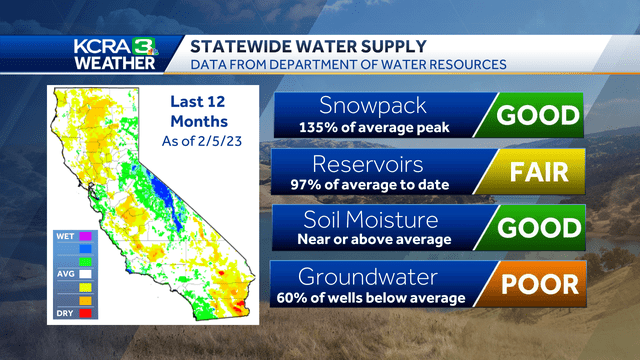

The first week of February brought only modest amounts of rain and snow but despite that, California’s snowpack and many of the state’s largest reservoirs are in good shape.
According to data tracked by California’s Department of Water Resources, the statewide snowpack is at 135% of the average peak. Typically the snowpack peaks in late March to early April.
(Photo: the next chance for rain and snow.)
As of midday Thursday, Lake Shasta is at 58% of capacity, which is 86% of the average for this date. Lake Oroville is at 67% of capacity. That is 113% of the average for today’s date. Shasta and Oroville are the two largest surface water storage facilities in the state. Water storage will gradually increase at both sites in the coming weeks and months as the Sierra snowpack melts off.
Based on those numbers, surface water conditions are promising as we inch closer to spring. However, the groundwater supply, which includes the wells and pumps that so many in the Valley need to rely on, remains well below average.
DWR says that 60% of the groundwater wells it tracks are running below average and 58 wells […]
Full article: From snowpack to groundwater: Here’s a look at water supply conditions across California
Clean water is essential for life, yet millions of Americans unknowingly consume contaminants through their…
Human brains contain higher concentrations of microplastics than other organs, according to a new study, and the…
From the Office of the Governor: In anticipation of a multi-day, significant atmospheric river in Northern California,…
From Governor Newsom: Scientists, water managers, state leaders, and experts throughout the state are calling…
Photo: A harmful algal bloom in Milford Lake, Kansas, made the water appear bright green.…
An expanded plastic foam coffee cup is at a donut shop in Monterey Park, California.…